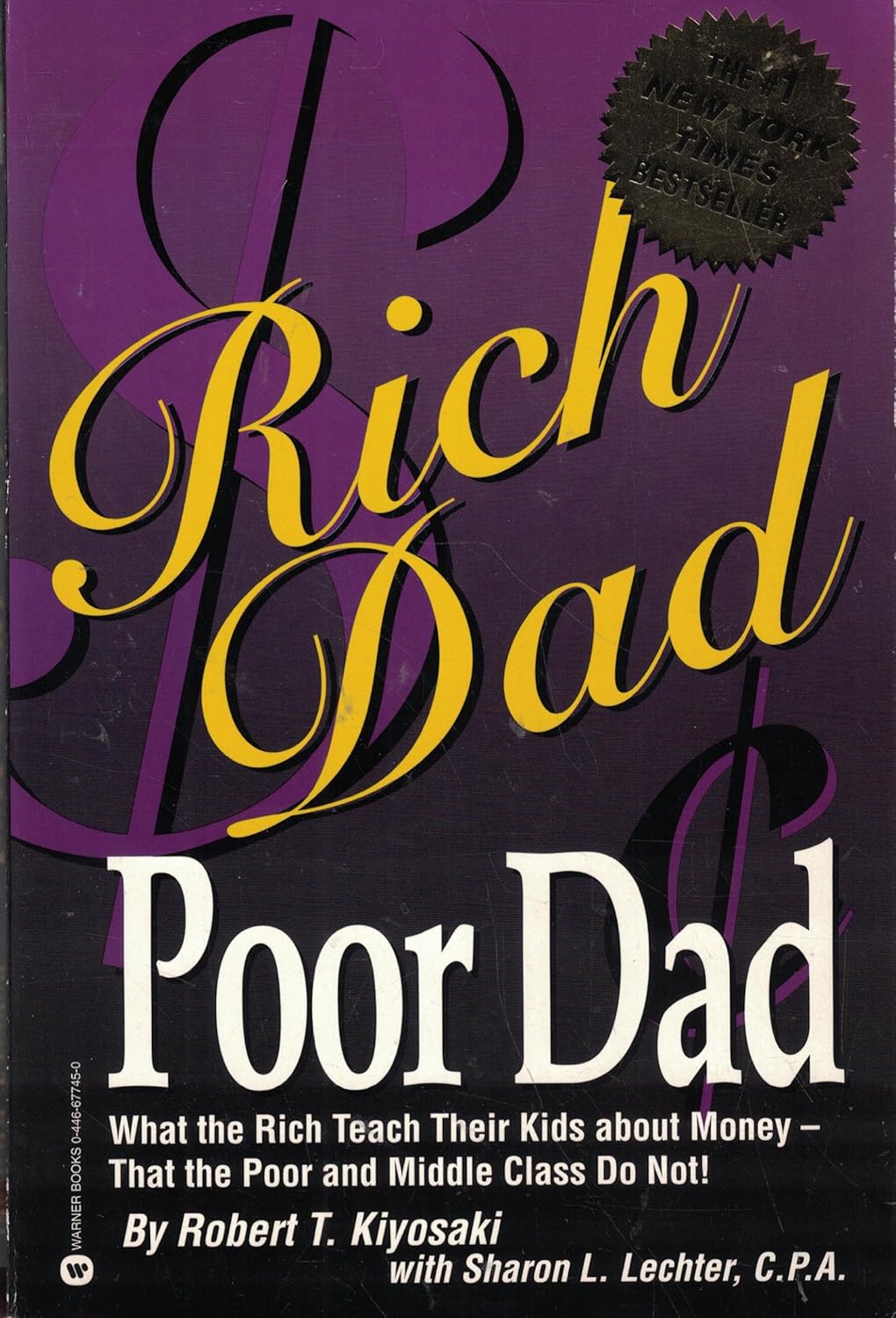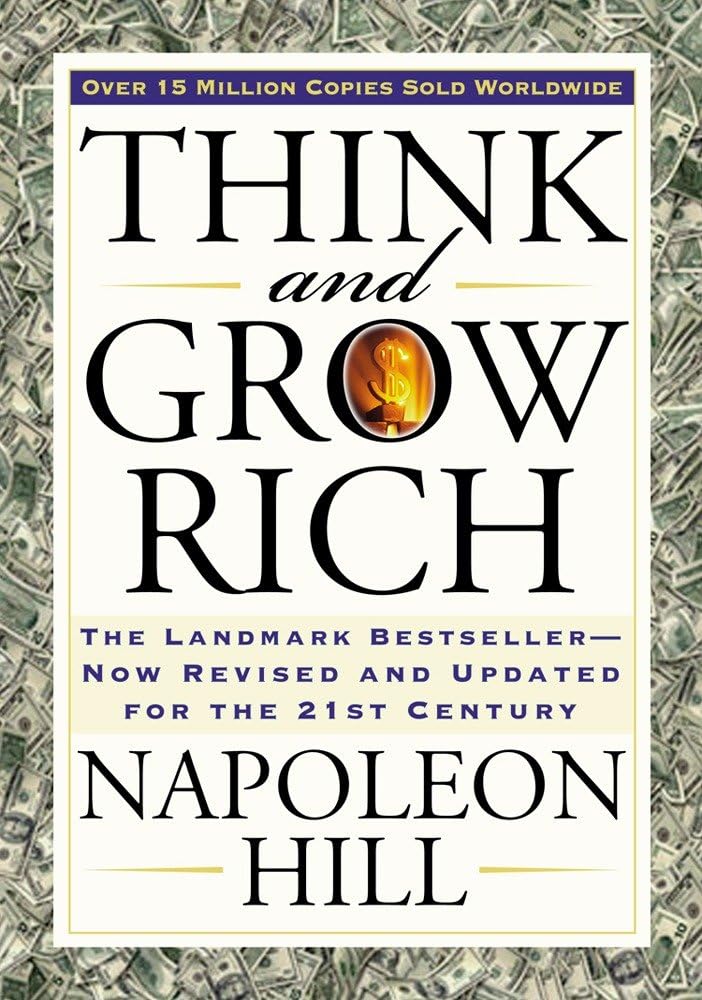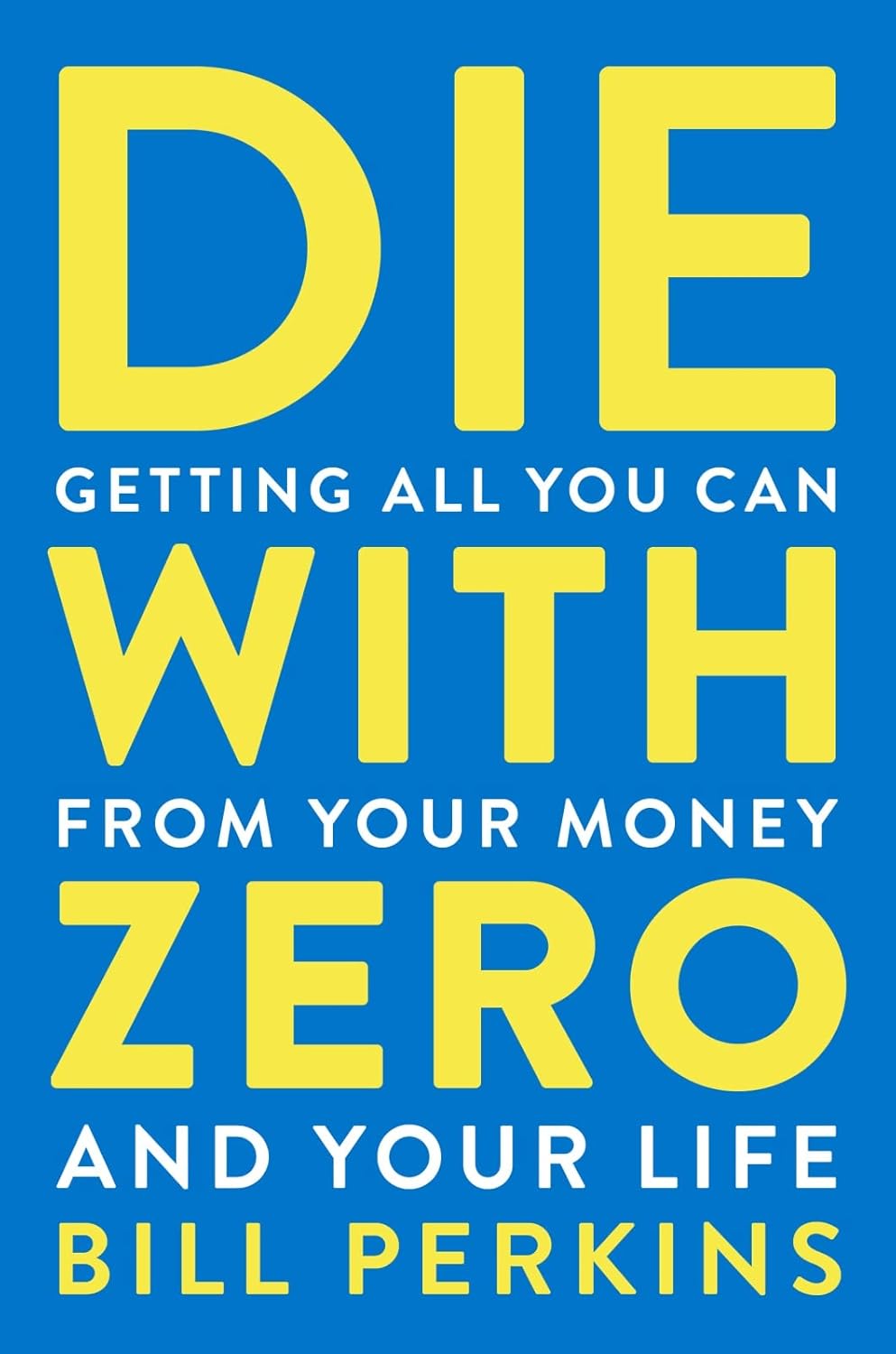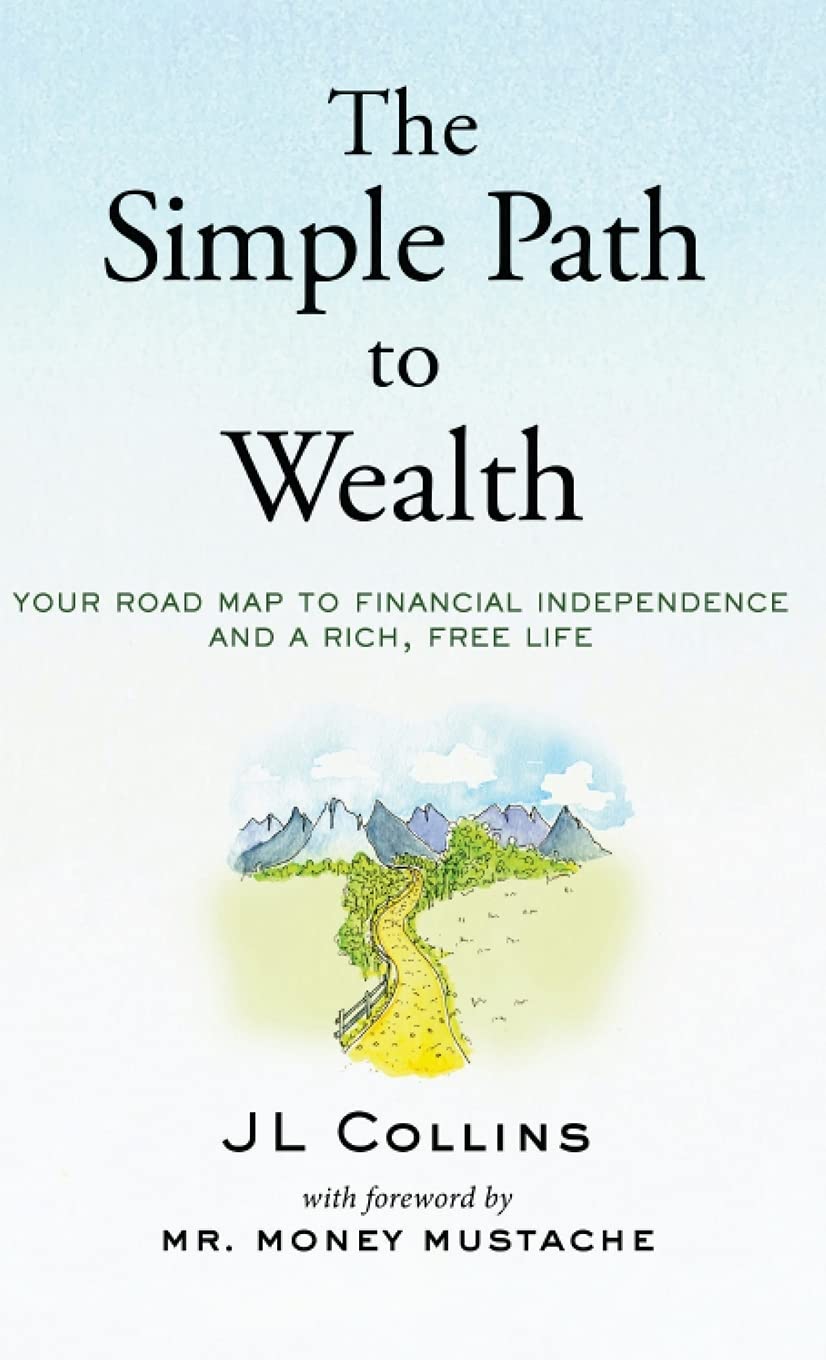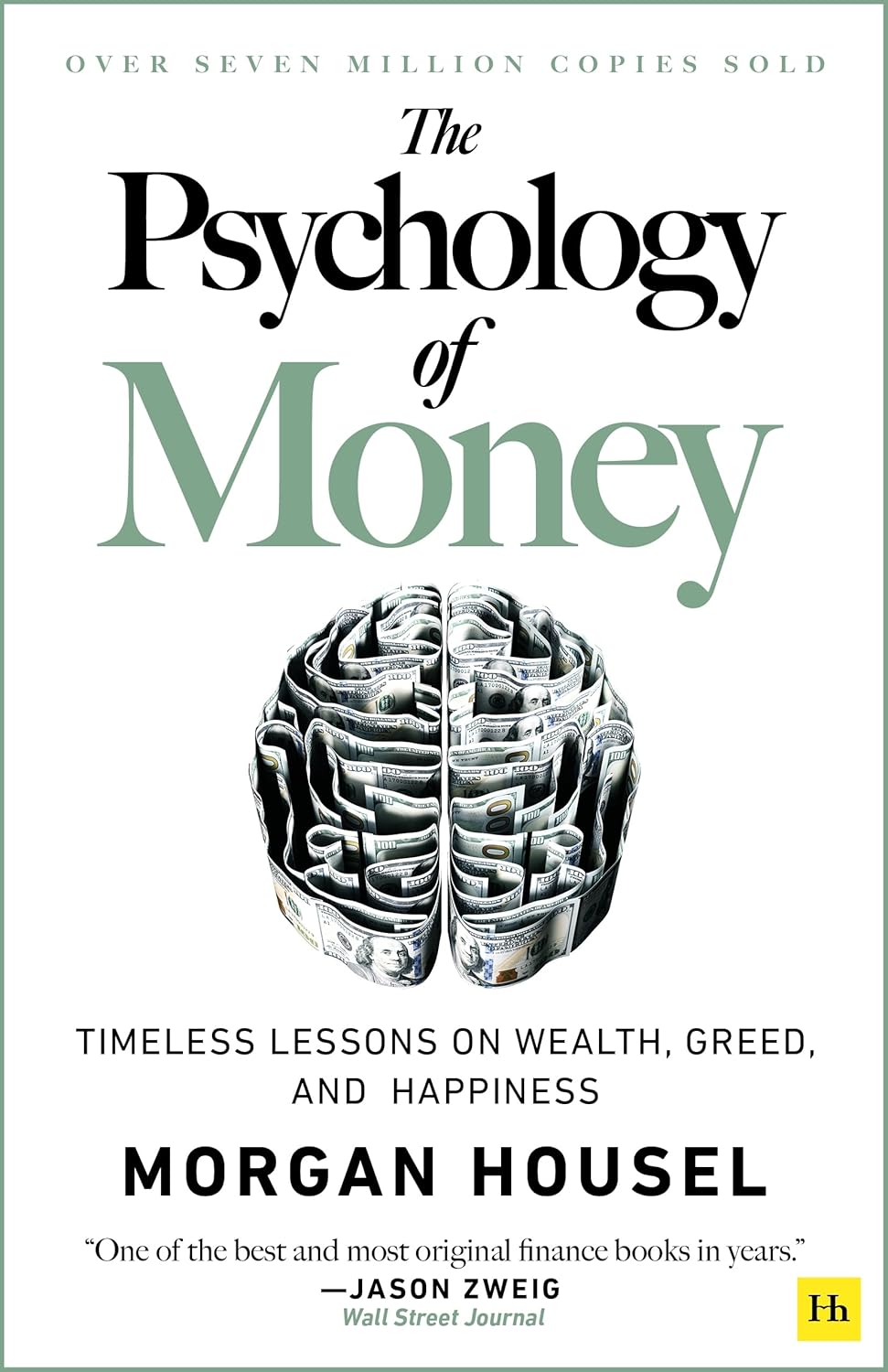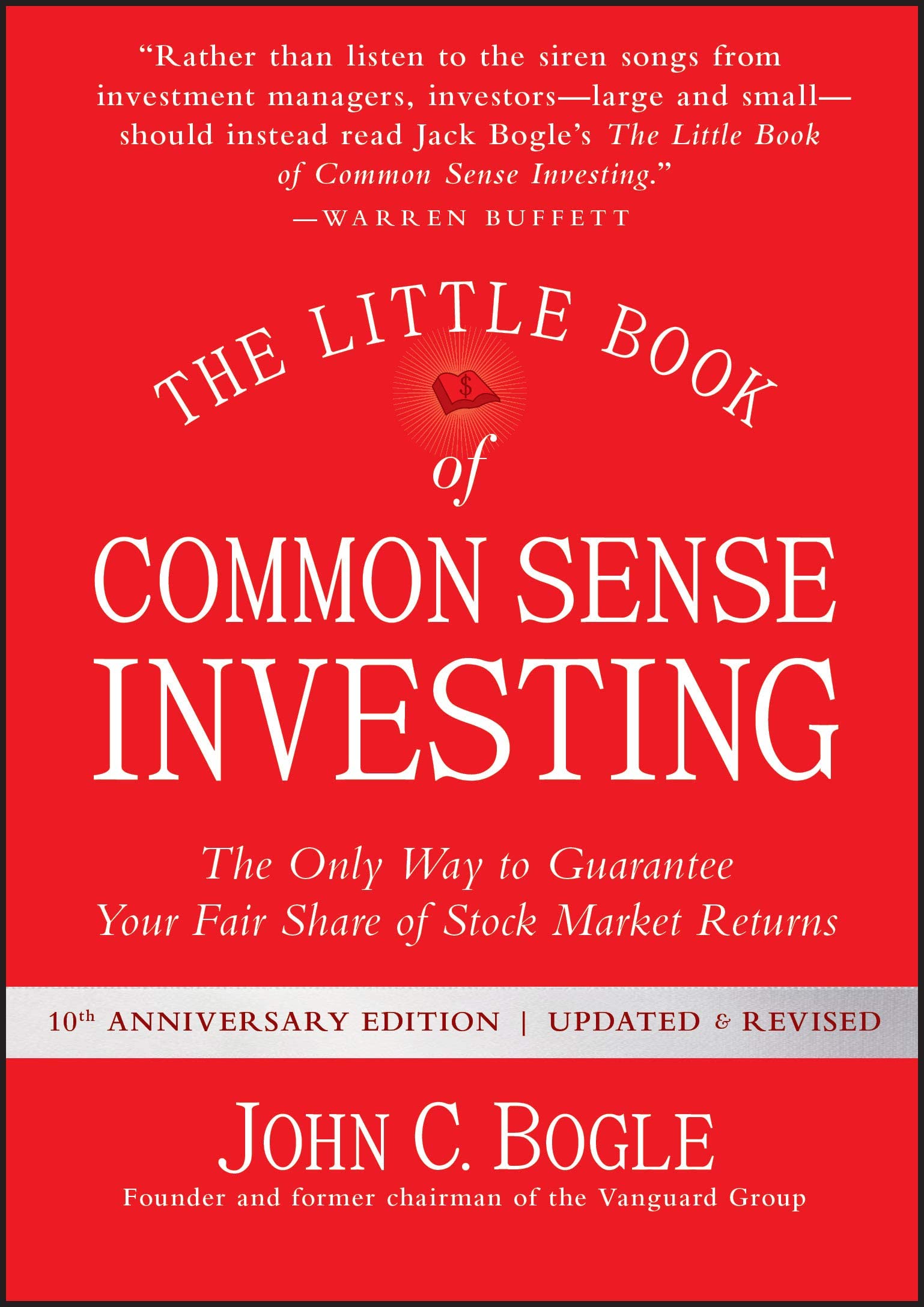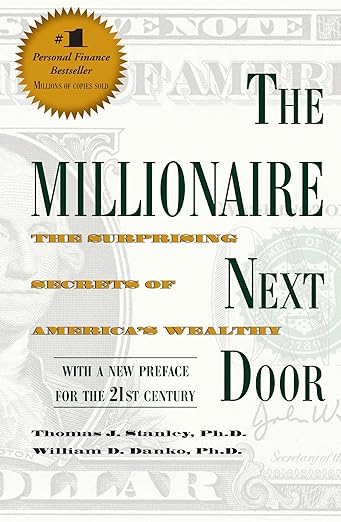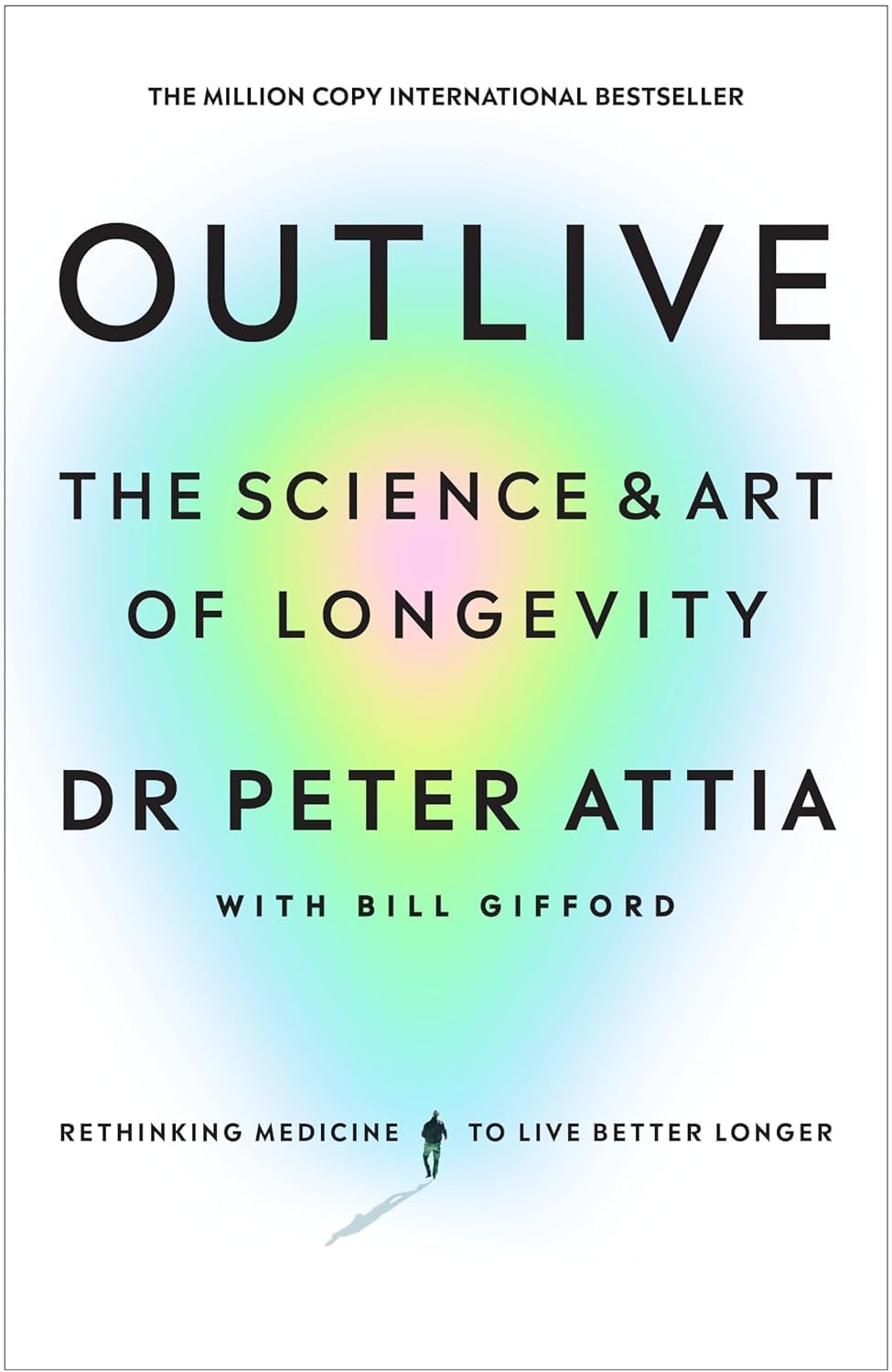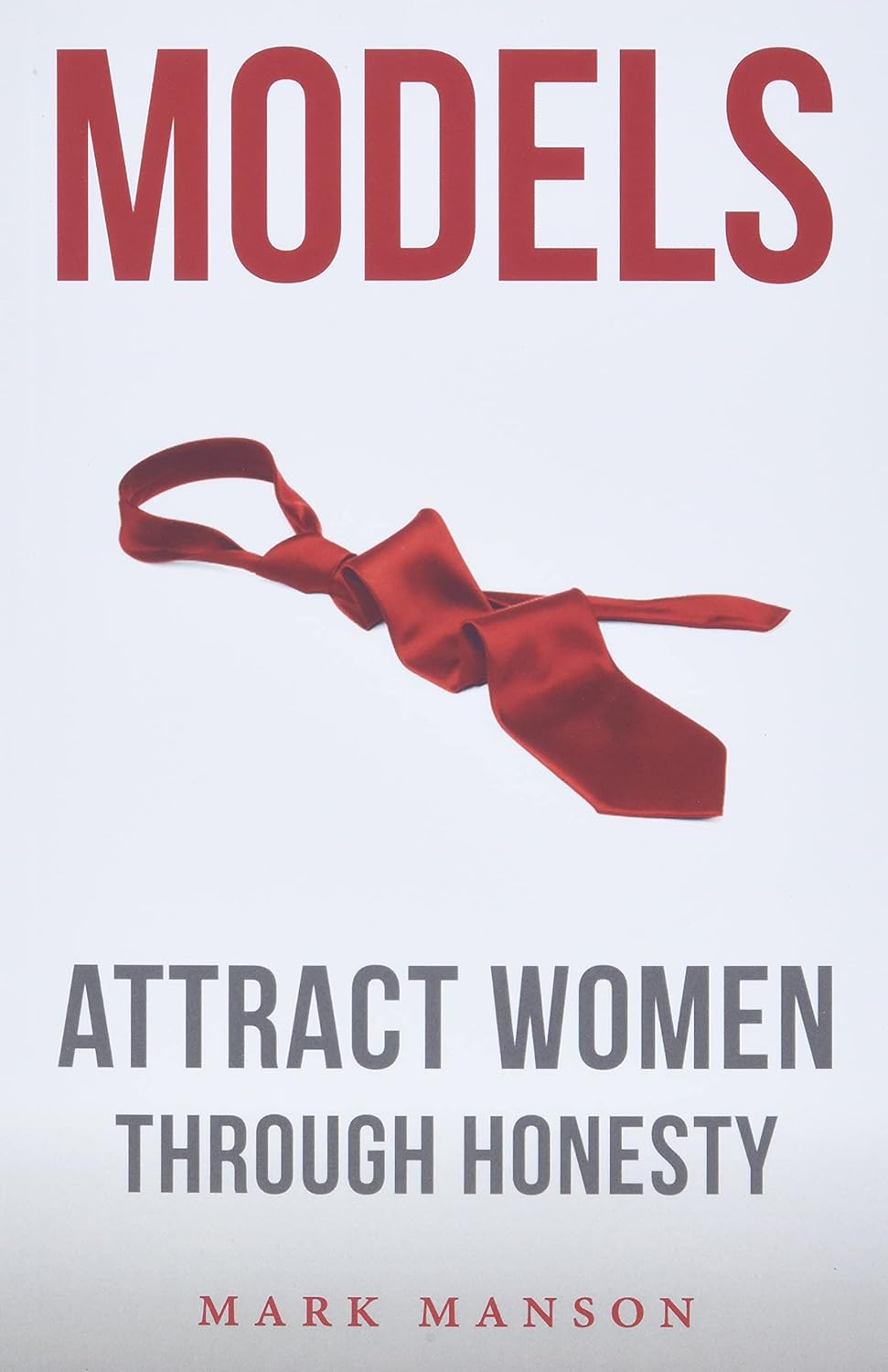
Buy The Book
The 4-Hour Workweek: Escape 9-5, Live Anywhere, and Join the New Rich
About
“The 4-Hour Workweek,” by Timothy Ferriss, challenges the conventional 9-to-5 grind and proposes a lifestyle centered around freedom, flexibility, and efficiency. The book outlines a step-by-step process to escape the traditional employment model by automating income streams, outsourcing tasks, and redefining productivity. Ferriss encourages readers to eliminate time-wasting activities, embrace unconventional thinking, and design a life focused on passions and experiences rather than endless work. It advocates for mini-retirements, leveraging technology, and creating businesses that run on autopilot, all with the goal of achieving a life rich in adventure and purpose. Ultimately, the book aims to show people that they don’t have to wait until retirement to enjoy life.
Timothy Ferriss is an American entrepreneur, author, and podcaster. Known for his self-experimentation and lifestyle design, he gained widespread recognition with “The 4-Hour Workweek.” He has since written other best-selling books, including “The 4-Hour Body” and “The 4-Hour Chef.” As an angel investor and advisor, Ferriss has also been involved with numerous startups, further solidifying his reputation as a leading voice in personal development and entrepreneurship.
For People
– Aspiring Entrepreneurs
– Remote Workers
– Individuals Seeking Work-Life Balance
– Those Dissatisfied with Traditional Employment
– People Interested in Lifestyle Design

Spark
Review
Like this
✦ Step I: D is for Definition (Chapters 1-4)
Challenge assumptions about work, income, and lifestyle. Most people accept the deferred-life plan—working for decades with the hope of eventually enjoying retirement. Reject this outdated model. Redefine wealth not as money alone but as the ability to live life on your own terms. Time and freedom are the essential currencies of a truly rich life, not just financial resources. Break free from the belief that hard work and long hours are the only path to success.
The first step to creating an extraordinary lifestyle is becoming comfortable with being unconventional. Question societal norms and traditional career paths. The idea that working harder and longer leads to happiness is often a misleading trap. Instead, focus on being effective instead of busy. Replace meaningless tasks with actions that produce significant outcomes. Efficiency is irrelevant if you are doing the wrong things. The key is identifying and prioritizing the few essential actions that yield the most meaningful results.
Define what you want by envisioning your ideal lifestyle. Start with the end in mind. How would your perfect day look? What would you do if money were not a limiting factor? Imagine the experiences, relationships, and freedom you desire, and let that vision guide your decisions. Stop postponing the things that bring joy and fulfillment. Consider how you can incorporate those elements into your life right now, instead of waiting for an elusive “someday.”
Recognize and eliminate the fear of failure or judgment that holds you back. Fear is often the biggest barrier to change. Understand that most fears are exaggerated or imagined, and the consequences of taking bold actions are rarely as dire as they seem. Embrace discomfort and uncertainty as necessary parts of growth. By facing fears head-on, you begin to expand your comfort zone, opening new opportunities for achievement and satisfaction.
Adopt the concept of relative wealth. Traditional thinking measures wealth by absolute numbers—how much money you have in the bank. However, a better way to evaluate wealth is through the lens of time and mobility. Someone who earns $50,000 a year but works only ten hours a week and can travel freely is often wealthier in practical terms than someone earning $500,000 annually but tied to a rigid schedule. Time and location independence are crucial factors in creating a life of freedom.
Define realistic goals and challenge limiting beliefs about what is possible. Many people underestimate what they can achieve because they set goals based on societal expectations rather than personal desires. Aim higher, and focus on what excites you, not just what feels safe or attainable. The biggest risk is not aiming too high and failing but aiming too low and succeeding in a life that doesn’t fulfill you.
Understand the concept of the “New Rich.” This group measures success not by traditional standards like job titles or years of service but by their ability to control their time and pursue their passions. The New Rich prioritize experiences over possessions, flexibility over security, and living now rather than deferring happiness. Entering this mindset requires rethinking the value of work, money, and leisure.
Escape the rat race by rejecting the notion that life must follow a predictable script. The nine-to-five grind, followed by a conventional retirement, is not the only option. Instead of living for weekends or vacations, design a life where every day feels meaningful. Work should be a means to an end, not the end itself. Optimize your resources and efforts to maximize your quality of life rather than wasting energy on unproductive routines.
Learn to separate income from time. The traditional model of trading hours for dollars is inherently limiting. No matter how much you earn per hour, there are only so many hours in a day. To break free, focus on creating systems that generate income with minimal ongoing effort. Passive or semi-passive income streams allow you to maintain financial stability while freeing up time for what truly matters.
Reshape your relationship with risk. Many people avoid pursuing unconventional paths because they fear instability. However, staying in an unfulfilling situation can be far riskier in the long term. Calculate the true costs of inaction—missed opportunities, wasted potential, and a life of regret. Define the worst-case scenario, assess its likelihood, and plan contingencies to mitigate it. Once the fear of the unknown is addressed logically, it becomes easier to take bold steps toward a better future.
Focus on your strengths and delegate or eliminate everything else. Trying to do everything yourself is a recipe for burnout and inefficiency. Concentrate on the areas where you excel and let others handle tasks that drain your energy or expertise. Outsourcing and automation are powerful tools for reclaiming your time and achieving greater results with less effort.
Finally, embrace the power of selective ignorance. Constant information consumption leads to distraction and overwhelm. Not all news, emails, or social media updates are important. Be ruthless in filtering out unnecessary inputs and focus only on what directly contributes to your goals. By prioritizing quality over quantity in both information and actions, it becomes possible to achieve more while doing less.
Redefining success and wealth requires shifting your mindset and questioning deeply ingrained assumptions. By focusing on what truly matters—freedom, time, and personal fulfillment—it’s possible to create a life that aligns with your values and desires.
✦ Step II: E is for Elimination (Chapters 5-7)
Free yourself from the unnecessary and focus only on what truly matters. Productivity doesn’t come from doing more but from doing less—specifically, by eliminating tasks that don’t contribute meaningfully to your goals. Most people mistakenly equate being busy with being productive, but busyness is often a sign of inefficiency. Identify the activities that consume time without yielding significant results and remove them from your routine entirely.
Apply the 80/20 principle to every aspect of your life. A small percentage of tasks, clients, or efforts usually generates the majority of results or income. Conversely, a large portion of activities produces minimal or no impact. Focus intently on the critical few that deliver the greatest returns and cut out the trivial many that waste time and energy. Ruthless prioritization is essential for maximizing efficiency.
Eliminate the concept of multitasking. Splitting attention across multiple activities reduces effectiveness and increases stress. Concentrate on one task at a time, dedicating undivided attention to it until completion. By working with focus and intention, it’s possible to accomplish more in less time while maintaining higher quality results.
Break the habit of constant availability. Being reachable at all times through email, phone, or meetings creates interruptions that derail focus and productivity. Limit accessibility by setting boundaries and automating communication. For example, check email only at specific times during the day rather than responding instantly. Communicating these boundaries ensures others respect your time while allowing you to reclaim control over your schedule.
Delegate or eliminate tasks that don’t align with your strengths or priorities. There’s no need to do everything yourself. Hiring virtual assistants or outsourcing repetitive and low-value tasks frees up time for higher-impact activities. Focus on what only you can do, and hand off the rest to others. This not only increases efficiency but also reduces stress and mental clutter.
Reduce or remove meetings altogether. Meetings are often unnecessary, overly long, and unproductive. Before scheduling or attending one, ask whether it’s truly needed and whether the same objective could be achieved through a brief email or phone call. For meetings that are unavoidable, set strict time limits and clear objectives to ensure they stay focused and efficient.
Say no more often. Many people overcommit because they fear disappointing others or missing opportunities. However, saying yes to everything leads to overwhelm and dilutes focus on what’s truly important. Learn to decline politely but firmly. Prioritize your time and energy by reserving them for activities and people that align with your goals and values.
Automate decision-making wherever possible to conserve mental energy. Small, repetitive choices—like what to eat, wear, or do first in the morning—can drain cognitive resources. Establish routines, systems, or rules that remove the need to make these decisions repeatedly. By simplifying daily life, you create space to focus on bigger, more meaningful challenges.
Design your environment to minimize distractions. External interruptions, whether from coworkers, social media, or notifications, make it harder to stay productive. Create a workspace that supports concentration by eliminating potential disruptions. For example, use noise-canceling headphones, disable notifications, and communicate to those around you when you need uninterrupted time.
Shift your mindset regarding perfectionism. Pursuing perfection often leads to paralysis and wasted time. Recognize when something is “good enough” and move on. Striving for excellence is important, but obsessing over minor details that don’t significantly impact outcomes is counterproductive. Focus on delivering value rather than achieving flawless execution.
Implement a low-information diet to reduce overwhelm. Consuming excessive news, emails, or social media updates creates mental clutter and distracts from essential tasks. Selectively limit the information you consume to what is directly relevant to your goals or well-being. This not only saves time but also helps maintain clarity and focus.
Stop treating work as a never-ending process. Set clear boundaries for when work begins and ends each day. Avoid the trap of constantly checking emails or completing tasks outside designated hours. By defining limits, you create time for leisure, relationships, and personal growth, which are just as important as professional success.
Elimination is about simplifying, streamlining, and focusing. By removing unnecessary tasks, distractions, and commitments, you gain the freedom to concentrate on what truly matters. This approach not only boosts productivity but also creates space for a more fulfilling and balanced life. Let go of the belief that more effort equals better results and embrace the power of doing less but doing it better.
✦ Step III: A is for Automation (Chapters 8-11)
Stop trading time for money by building systems that create income with minimal involvement. Automation is the key to achieving financial freedom and reclaiming time. The goal is to separate earnings from the hours worked, allowing for income generation even while you sleep. Focus on leveraging technology, outsourcing, and scalable business models to achieve this independence.
The first step is to create or identify a product that meets a specific need or solves a problem for a target audience. This often works best with niche markets where competition is lower, and demand is high. Whether it’s a physical product, a digital offering, or a service, the idea is to provide value while keeping operations as simple as possible. Avoid businesses that require constant oversight or intensive customer interactions.
Once the product or service is identified, set up a system that handles sales, delivery, and customer support. Use tools like e-commerce platforms, fulfillment services, and automated email workflows to streamline operations. The aim is to remove yourself from daily management tasks, allowing the system to run with minimal input. This creates a passive or semi-passive income stream that doesn’t require constant effort.
Outsourcing is a cornerstone of automation. Delegate repetitive or technical tasks to virtual assistants or specialized freelancers. Focus only on high-level decision-making and let others handle the details. Hiring remote workers or agencies can often be more cost-effective than trying to do everything yourself. By building a team or network of reliable professionals, it’s possible to scale a business without increasing personal workload.
Automate communication to reduce interruptions and save time. Tools like auto-responders, chatbots, and pre-written templates can handle common inquiries and requests. Batch processes like email handling or customer follow-ups instead of addressing them one by one throughout the day. This not only increases efficiency but also ensures that customers feel attended to without requiring constant attention.
Streamline finances and payments to avoid manual oversight. Use subscription-based billing models or recurring payment systems where possible. Services like payment gateways and accounting software can manage invoicing, tracking, and financial reporting automatically. By automating financial processes, it becomes easier to maintain cash flow and focus on growing the business without being bogged down by administrative work.
Focus on scalability. A scalable business model allows revenue to grow without a proportional increase in effort. For example, selling digital or informational products, like courses or e-books, enables unlimited sales without requiring additional resources for each new customer. Similarly, businesses that rely on licensing, royalties, or affiliate marketing offer a way to earn income without ongoing involvement.
Test and refine the system regularly to ensure it continues to run smoothly. Automation doesn’t mean “set it and forget it.” Analyze performance metrics, customer feedback, and operational efficiency to identify areas for improvement. Make adjustments as needed to optimize results and ensure the system aligns with your goals.
Leverage the power of “muses.” A muse is a low-maintenance business or product that generates consistent income and supports your ideal lifestyle. These ventures are designed to operate with minimal input, freeing up time for other pursuits. A muse can be anything from an online store to a subscription service, as long as it provides reliable income without requiring constant attention.
Embrace geographic freedom by combining automation with remote management. Once a business is automated, location becomes irrelevant. Use online tools and communication platforms to oversee operations from anywhere in the world. This opens up opportunities for travel, exploration, or simply living where you choose without being tied to a specific place for work.
Automation isn’t just about financial systems; it’s also about automating your decisions and routines to save mental energy. For example, using meal delivery services, automated bill payments, or even pre-planned weekly schedules can free up time and reduce decision fatigue. The less time spent on mundane or repetitive tasks, the more energy is available for creative and meaningful work.
The ultimate goal of automation is to create freedom—freedom to focus on what matters most, whether it’s pursuing passions, spending time with loved ones, or exploring new opportunities. By building systems that run seamlessly without constant oversight, it’s possible to step away from the grind and design a life that aligns with personal values and aspirations. Automation isn’t about avoiding work entirely; it’s about eliminating unnecessary effort so that energy is spent where it truly counts.
✦ Step IV: L is for Liberation (Chapters 12-16)
Break free from the constraints of traditional work and location dependency to fully design your life. Liberation is about achieving the ultimate goal: living on your own terms while maintaining financial stability and freedom. Once time and income are decoupled through automation and elimination, the next step is to escape rigid structures and take control of where and how life happens. This step focuses on creating mobility, flexibility, and independence.
The first move toward liberation is removing the need to be physically present at work. Whether through remote work agreements, entrepreneurship, or automation, the goal is to make location irrelevant. If working for someone else, propose a remote work arrangement by demonstrating how productivity increases outside the office environment. Focus on results rather than hours spent working. Start with a trial period to prove effectiveness, then transition to a permanent remote setup.
Use travel as a tool for personal growth and lifestyle expansion. Once location independence is achieved, consider embracing the concept of being a “mini-retiree.” Instead of deferring all leisure and exploration until the traditional retirement age, integrate extended travel and experiential living into your present life. Living in different places, especially in countries with a lower cost of living, allows for richer experiences without requiring extravagant budgets.
Redefine retirement entirely by questioning its necessity. Traditional retirement assumes decades of hard work followed by a sudden stop, but this approach often leads to burnout and a lack of fulfillment. Instead, design a life where work and leisure coexist harmoniously. Alternate between periods of intense focus and periods of relaxation or travel. By spreading out time for enjoyment throughout life, the need for a formal retirement diminishes.
Conquer the fear of leaving behind stability. Many people hesitate to embrace liberation because of the perceived risks of stepping away from a secure job or a fixed location. Break this fear by creating contingency plans and financial safety nets. For instance, maintain an emergency fund and ensure that automated income streams are reliable. By preparing for the unexpected, it’s easier to take bold steps toward freedom.
Practice the art of mobility. Liberation isn’t just about physical location—it’s also about mental flexibility and the ability to adapt. Let go of unnecessary possessions and commitments that tie you down. Embrace minimalism by focusing on experiences over material goods. This reduces mental clutter and makes it easier to move freely, whether geographically or in terms of life direction.
Consider the concept of geoarbitrage to maximize freedom and financial efficiency. Geoarbitrage involves leveraging differences in currency value and cost of living between countries to live better for less. For example, earning income in a strong currency like USD or EUR while living in a country with lower living costs allows for an elevated lifestyle without requiring higher earnings. This strategy creates more room for savings, investments, or travel.
Set clear boundaries between work and personal life to maintain balance. Liberation isn’t about working all the time from anywhere—it’s about intentionally creating space for what matters most. Use tools like time-blocking or scheduled “off” periods to ensure work doesn’t encroach on leisure. By prioritizing freedom, relationships, and personal growth, it becomes easier to stay aligned with an ideal lifestyle.
Experiment with lifestyle design to discover what works best for you. Liberation means having the ability to tailor life to your preferences. Whether that’s traveling full-time, settling in one location while working remotely, or balancing multiple interests and projects, it’s about creating a system that supports happiness and fulfillment. Regularly reassess your goals and adjust as needed to stay aligned with your vision.
Leverage the newfound freedom to focus on personal passions and higher purpose. Liberation isn’t just about escaping work; it’s about creating the space to pursue what truly matters. Whether it’s creative projects, charitable endeavors, or spending time with loved ones, use this freedom to build a meaningful and rewarding life.
Recognize that true liberation is a mindset, not just a set of circumstances. Freedom doesn’t necessarily mean giving up all structure or responsibility—it means having the ability to choose. By taking control of time, income, and location, it becomes possible to design life deliberately rather than being confined by societal norms or expectations.
Liberation is the culmination of the process: eliminating unnecessary tasks, automating income, and taking charge of time and mobility. It’s about reclaiming life as your own, breaking free from outdated work models, and creating a lifestyle that resonates with your values and dreams. Instead of waiting for the “perfect time,” start building the life you want—right now.






